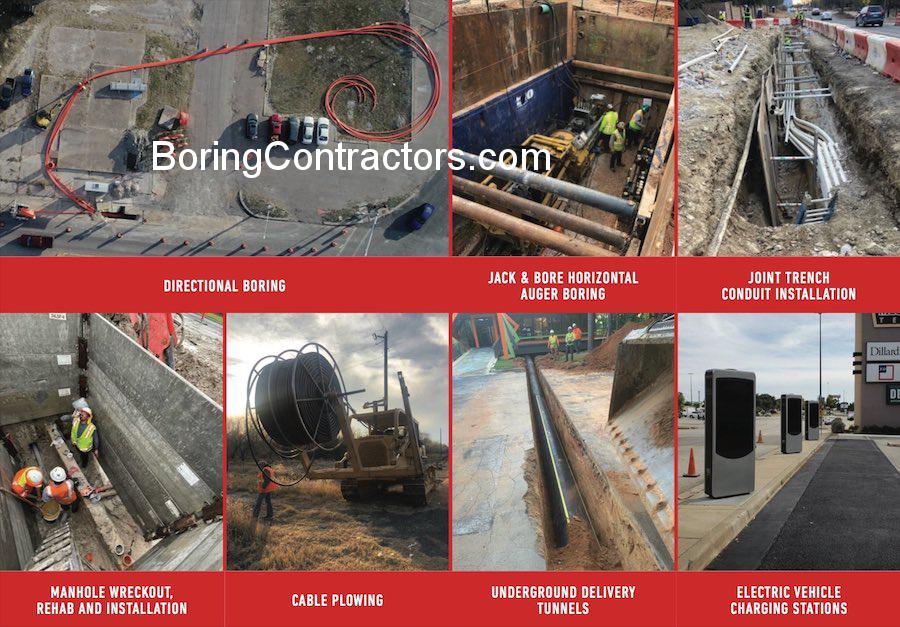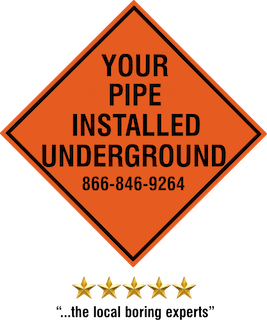Manhole Installation
Boring Contractors, LLC | The Trenchless Underground Utility Horizontal Directional Drilling (HDD) Company - Manhole Installation Contractors
Manhole installation plays a critical role in the construction and maintenance of underground infrastructure across various utilities, including duct banks, sewer systems, stormwater drainage, electrical networks, and telecom lines. Here’s how manholes are utilized in these applications:
Boring Contractors, LLC | The Trenchless Underground Utility Horizontal Directional Drilling (HDD) Company - Manhole Installation Companies
1. Duct Bank Construction
- Purpose of Manholes:
- Provide access points for pulling, splicing, and maintaining underground conduits that house electric or telecom cables.
- Serve as junction points where multiple conduits converge or change direction.
- Installation Process:
- Manholes are placed at intervals along the duct bank to facilitate future cable installation and repairs.
- Often precast concrete manholes are installed to speed up construction.
2. Sewer Systems
- Purpose of Manholes:
- Allow access for cleaning, inspection, and maintenance of sewer lines.
- Enable connection of lateral lines to main sewer pipelines.
- Facilitate changes in pipeline direction, slope, or diameter.
- Installation Process:
- Installed at key points, such as where pipelines intersect or experience significant changes in gradient or direction.
- Manholes are designed to handle wastewater loads and resist infiltration or exfiltration.
3. Stormwater and Drainage Systems
- Purpose of Manholes:
- Serve as access points for debris removal and maintenance of stormwater and drainage pipelines.
- Aid in managing water flow by connecting various sections of the system.
- Installation Process:
- Typically installed at junctions, bends, or where multiple drainage pipes converge.
- Must be designed to handle large water volumes during heavy rainfall.
4. Electrical Systems
- Purpose of Manholes:
- Provide access for the installation, maintenance, and repair of underground power cables.
- Protect electrical infrastructure from environmental damage.
- Installation Process:
- Often equipped with heavy-duty covers to ensure safety and prevent unauthorized access.
- Installed at regular intervals to provide easy access for workers.
5. Telecom Networks
- Purpose of Manholes:
- Allow access to underground fiber-optic and telecom cables for maintenance and splicing.
- Serve as junctions for distributing telecom lines to different areas.
- Installation Process:
- Positioned at key points along the telecom network for efficient serviceability.
- Designed to protect delicate telecom cables from environmental and physical damage.
Manhole Construction Considerations
- Materials: Precast concrete, brick, or polymer materials are commonly used for durability and ease of installation.
- Size and Shape: Manholes are tailored to specific utility needs, with considerations for the size of pipes, cables, and required access.
- Placement: Strategically located based on utility design, accessibility, and maintenance requirements.
Boring Contractors, LLC | The Trenchless Underground Utility Horizontal Directional Drilling (HDD) Company - Manhole Installation Near Me
Applications in Multi-Utility Projects
Manholes in projects involving multiple utilities (e.g., duct banks that house both electric and telecom lines) are designed to separate utilities safely while ensuring each service can be accessed without interfering with the others.
In all cases, manhole installation ensures system efficiency, long-term durability, and accessibility for maintenance, making them indispensable in underground utility construction.


